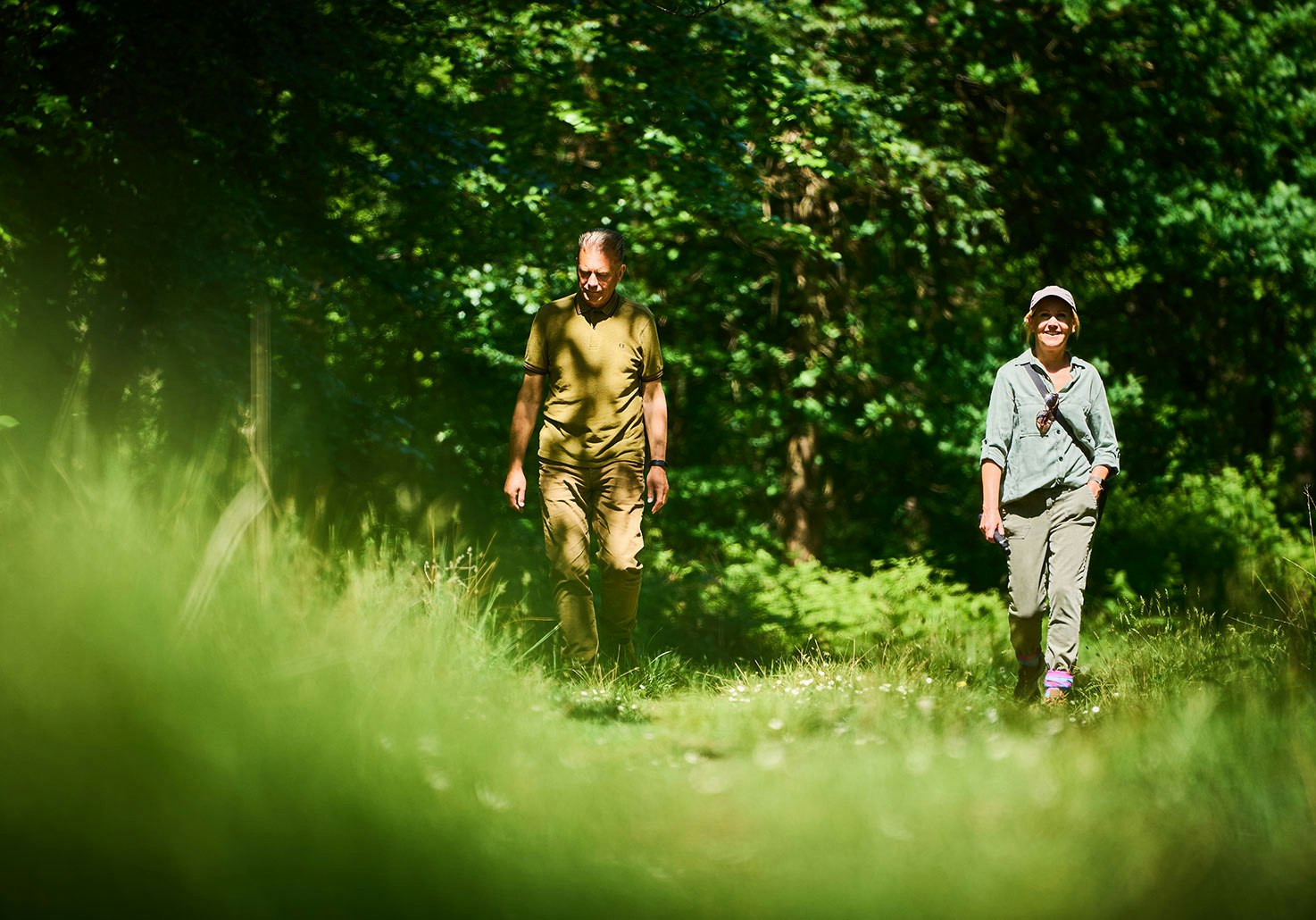Autumn Rewilding – Beavers, Scrapes and Raptors at Work
Autumn rewilding in action: Chris Packham and the team build beaver habitats, bird scrapes and raptor perches to boost British biodiversity.

Ecotalk’s Chief Ecologist, Chris Packham, recently led the team deep into Bowyers Wood in Sussex to survey the nearly 300‑acre site where they’ll be carrying out a major restoration project. Though the woodland already appears lush and picture‑perfect, our experts know that, by applying carefully tailored interventions, we can unlock enormous gains for wildlife, landscape health and local communities.

Unearthing Hidden Potential
At first glance, Bowyers Wood seems to need little more than a stroll to appreciate its beauty: interlaced streams, dappled ponds, dense stands of chestnut and beech, and pockets of pasture. But beneath this green tapestry lies a mosaic that’s fallen out of balance. Overstood coppice has closed the canopy, limiting light to the forest floor and stifling ground‑flora and insect life. Stagnant, shaded ponds are home only to mosquitoes and detritivores. Intensively grazed grassland resembles a “McDonald’s burger of grass” – uniform, species‑poor and inhospitable to invertebrates and small mammals.
Chris Packham emphasises that none of this is irreversible. “Nature responds rapidly when given the chance,” he says. “By reviving traditional management - coppicing chestnut, restoring glades, softening edges and rewetting pools - we’ll create a shifting, light‑filled landscape that pulses with biodiversity.”
The first task is to re‑establish a sustainable coppice regime, centred on sweet chestnut stools that once supplied hop‑industry poles and long‑lasting fencing. Under‑managed for decades, the overgrown coppice captures too much canopy light, choking out wildflowers, ferns and spring ephemerals.
When a stand is back to near ground level, the transformation is sometimes startling even unsettling to onlookers. Yet within days, woodland specialists note bursts of wildflowers, butterflies and nesting birds, and by season’s end bat activity often surges through the renewed understorey. Over a full coppice cycle, these rotational cuts produce continuous structural diversity, benefiting flora and fauna alike, while generating a timber yield that keeps the practice economically viable.
Opening Up Glades and Pasture
Just beyond the coppice lies an open glade once grazed by sheep. In fifty years, scrub and self‑sown oaks have crowded in, starving grassland herbs of light. Here, our plan is to re‑establish a “wood pasture” and experiment with “wood meadow” techniques: selective thinning of trees and re‑seeding with native wildflower mixes. By working hand‑in‑hand with the Forestry Commission and local volunteers, the team will lay the groundwork for colourful meadows alive with pollinators, kestrels and barn owls.
Baseline botanical and bird surveys will track progress. Monitoring key indicator species tells us more than species lists alone; they reveal broader habitat health. Over time, we expect this meadow network to seed neighbouring woodlands and hedgerows, stitching together a richer, landscape‑scale corridor for dormice, butterflies and woodland birds.
Softening Edges and Celebrating Deadwood
Where formal forestry often draws straight lines, we champion “tapered edges”, gentle transitions from wood to field. By removing fences, allowing fallen trunks to remain, and girdling selected boundary trees, we’ll create multi‑layered scrub belts that birds, insects and small mammals adore. Deadwood alone supports roughly one‑third of a tree’s associated species; leaving logs and standing snags in place transforms tidy clearances into bustling microhabitats.
Scrub itself - often maligned - the team recognise as invaluable. With its dense, bushy structure, it provides nesting sites for warblers, cover for hedgehogs and sun‑warmed hunting grounds for butterflies. Together, these ecotones (edge habitats) host more species than either open meadow or closed canopy, and they're be weaved strategically throughout the wood’s perimeter.
Breathing Life Back into Ponds
Hidden beneath the canopy are several ponds, whose steep, shaded banks encourage stagnation. Chris Perkins, Green Britain Foundation Land Manager, highlights the toll of encroaching trees: “Leaves and shade sap oxygen, and deep roots draw down water. These ponds now breed mosquitoes, but little else.” Our restoration will de‑shrub marginal trees, lower banks to encourage emergent plants and introduce oxygenating and nectar‑rich species.
Initially, the water may look worse with duckweed blankets and bare mud, but within three to four years, aquatic plants will flourish, attracting dragonflies, amphibians and even amphibious foragers like water voles. Thriving ponds not only diversify Bowyers Wood but also store water, buffering against summer droughts and winter floods.
Re‑introducing Ecosystem Engineers: Beavers
Arguably our most ambitious plan is to bring beavers back to Sussex. The team are preparing a high‑specification enclosure around a brook corridor to obtain a licence from Natural England. These iconic “ecosystem engineers” will reshape the woodland’s hydrology: building dams, creating pools, raising the water table and forging wetland mosaics.
One pair of beavers can transform a drain‑like stream into a complex wetland network, spawning new habitats for fish, amphibians, marsh birds and aquatic plants. As jacks and kits disperse downstream, they’ll extend this restoration beyond our fences, re‑establishing a keystone process lost from British woods for centuries.
Looking Ahead
Bowyers Wood represents more than another project site; it’s a blueprint for how our customers’ support translates into real‑world nature recovery. Under the guidance of Chris Packham - Ecotalk’s Chief Ecologist - and the Green Britain Foundation team of Christine, Steve, Chris and James, we’ll blend ancient craft with modern science to re‑knit habitat, revive landscapes and deepen public appreciation of the natural world.
Over the coming seasons, we’ll share updates on our work. Join us as this Sussex wood is transformed into a living, breathing testament to what’s possible when technology subscribers and conservationists unite for Earth’s recovery.